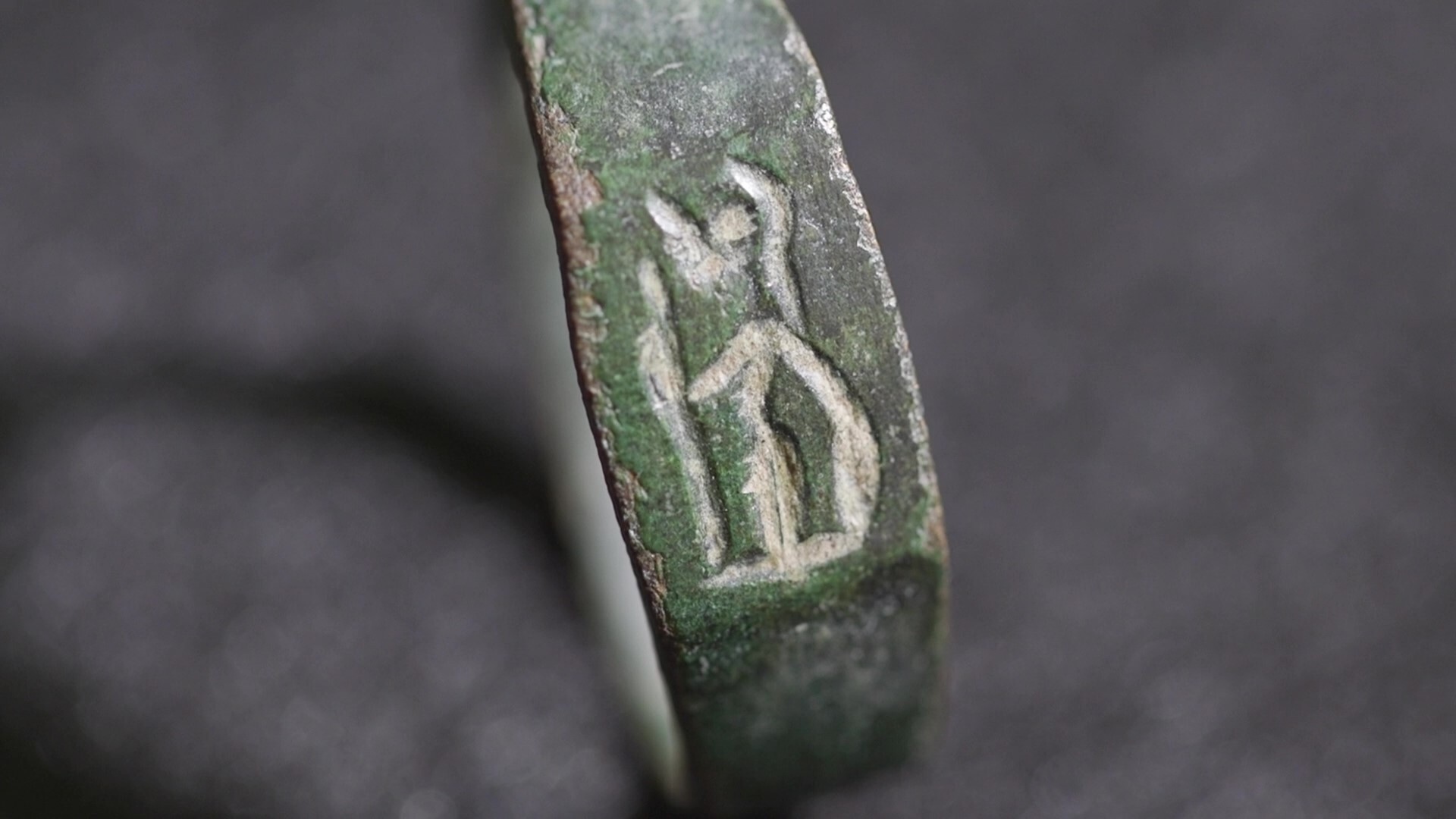
A teenager hiking in northern Israel unexpectedly discovered an 1,800-year-old ring adorned with an engraving of a Roman goddess holding a sword and spear.
The ring, which appears to be made of bronze, depicts Minerva, the Roman equivalent of the Greek goddess Athena, wearing only a helmet. Minerva, who was popular in the region during the Roman period, was "considered, among other things, as the goddess of war and military strategy, and also as the goddess of wisdom," Nir Distelfeld, inspector at the Israel Antiquities Authority (IAA) Theft Prevention Unit, and Eitan Klein, of the IAA's Unit for the Prevention of Antiquities Robbery, said in a statement.
Yair Whiteson, a 13-year-old, found the ring while hiking with his father in Haifa. The two were walking near an ancient quarry on Mount Carmel when Yair, who likes to collect interesting rocks and fossils, noticed a "small green item" on the ground.
"It was corroded, and at first, I thought it was just a rusty bolt," Yair said in the statement. "I thought about heating it, but then fortunately I understood it was a ring. At home, I saw it had an image on it. At first glance, I thought it was a warrior."
Related: 'Completely surreal': Metal detectorist unearths 1,500-year-old gold ring in Denmark
His family got in touch with the IAA, who then transferred the artifact to Israel's National Treasures Department.
The small ring likely belonged to a woman or girl during the Late Roman period (second to third centuries A.D.), the researchers said. It was found in Khirbet Shalala, an archaeological site on a hilltop near the quarry that contains the remains of a Roman-period farmstead.
"There are two burial caves on the quarry's edge," Distelfeld and Klein said in the statement. "The ring may have belonged to a woman who lived on this farm. Or, it might have fallen from a quarry worker, or it may have been a burial offering from these nearby graves. There are many possibilities."
The ring will go on display at the Jay and Jeanie Schottenstein National Campus for the Archaeology of Israel, located in Jerusalem.







